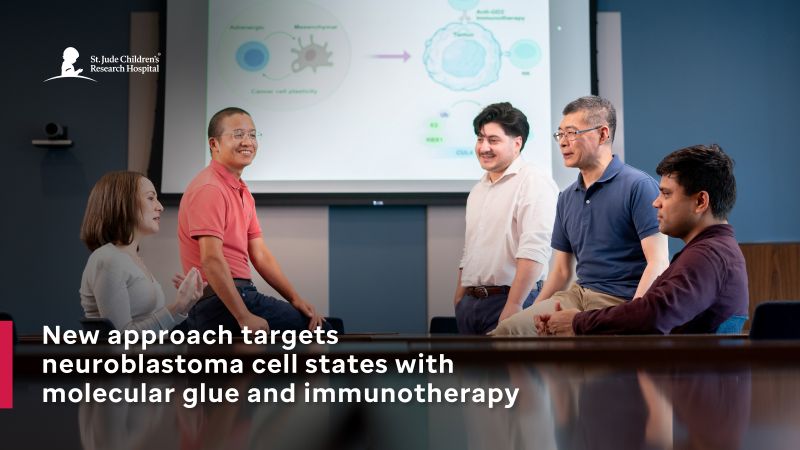St. Jude Children’s Research Hospital shared a post on LinkedIn:
“A new study has shown that combining indisulam, a molecular glue, with anti-GD2 immunotherapy can achieve a complete therapeutic response in laboratory models of neuroblastoma, regardless of the tumor cell state. This discovery offers a promising new approach for treating one of the most challenging pediatric cancers.
Neuroblastoma tumors are known for their ability to switch between different cell states, making them difficult to treat effectively. Traditional therapies often fail because tumor cells can transition to therapy-resistant states, leading to high relapse rates in high-risk patients.
As Jun Yang, MD, PhD, explained, “Neuroblastoma cells are highly dependent on a process called RNA splicing. So by ‘sticking’ an RNA splicing factor, RBM39, to protein-degrading machinery and forcibly degrading it, cell growth can be stopped.” However, the team observed that tumors could still relapse due to their plasticity.
By combining indisulam with anti-GD2 immunotherapy, the researchers found that the treatment halted tumor growth while triggering an innate immune response. This response increased GD2 expression on cancer cells and facilitated recruitment of natural killer cells, making immunotherapy more effective.
This approach addresses the challenge of tumor heterogeneity and cell state plasticity, which has limited the effectiveness of previous treatments. The findings represent a significant step forward in the development of targeted therapies for high-risk neuroblastoma. The combination therapy is now being further developed for clinical testing with the goal of improving outcomes for children with this aggressive cancer.
More from St. Jude Children’s Research Hospital on OncoDaily.


